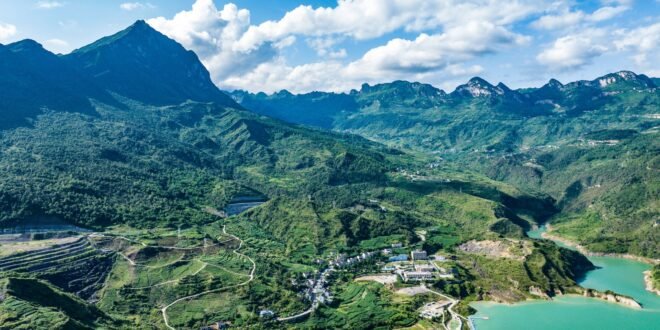China’s Strategic Shift and Guizhou’s Role in the New Economic Landscape
The global economic landscape is undergoing significant transformations, with China at the forefront of a strategic reorientation. A few years ago, the country made remarkable progress in eradicating extreme poverty, but now it is positioning itself as a key player in Beijing’s broader economic shift. This transition is being shaped by various factors, including the ongoing trade tensions with the United States, which have become a pivotal moment for Chinese policymakers.
The Impact of the Trade War on China’s Economy
The 2025 trade war initiated by the United States has highlighted the need for China to strengthen its domestic economy. Despite the challenges, the country has demonstrated resilience through its central role in global supply chains. This has allowed for a temporary truce with Washington, but Beijing is preparing for a longer-term conflict. The forthcoming Five-Year Plan, China’s primary development blueprint, is expected to emphasize the importance of the domestic market and enhance economic security.
Provincial leaders are aligning their strategies with the national agenda, especially with the 2026-2030 development plan officially released in March 2026. This plan aims to reshape the nation’s economic and industrial landscape, focusing on developing inland industrial bases, material reserves, and infrastructure.
Guizhou: A Strategic Hinterland
Guizhou, a mountainous province located 400 kilometers from the nearest coast, has not been significantly affected by the trade war. Instead, officials have recognized opportunities as Beijing strategically pivots towards the domestic market and focuses on economic security. The “strategic hinterland strategy,” introduced during a policymaking conference in December 2023, emphasizes the development of inland industrial bases, material reserves, and infrastructure.
This approach draws comparisons to the Third Line Construction Project, where the central government relocated defense projects and strategic factories to the western regions during the 1960s and 1970s amid tensions with the Soviet Union. The strategic hinterland has become a formal long-term strategy, endorsed by officials at the Communist Party’s third plenum in July 2024, supporting critical industries in China’s inland provinces.
The Greater Hinterland Strategy
A research report by Pangoal Institution, a Beijing-based think tank, outlines the Greater Hinterland Strategy, aiming to consolidate 10 central and western provinces, including Guizhou, into an economic zone to empower domestic markets and counter external risks. The report suggests that such a redistribution of regional economic layout would help offset external uncertainties and foster new growth engines.
During the era of central planning in the 1950s and 1960s, the central government directed funds to build factories in Northeast China, which became an industrial powerhouse. Deng Xiaoping’s reforms in 1978 shifted the focus to coastal regions, driving China’s economic boom. Now, the think-tank is calling for a new shift, urging the central government to adopt a similar strategy in the coming Five-Year Plan, with investments channeled into China’s hinterland provinces.
Opportunities and Challenges
Guizhou, once a battleground in President Xi Jinping’s anti-poverty campaign, has struggled to attract investors due to its mountainous terrain. However, recent infrastructure developments, including high bridges connecting the province to economic powerhouses, have improved connectivity. While some locals appreciate the influx of tourists and investment, overseas observers express concerns about mounting debt.
In 2024, Guizhou’s GDP grew by 5.3% year-on-year to 2.27 trillion yuan (US$317 billion), ranking No. 22 among China’s provincial jurisdictions. During the previous Five-Year Plan, Guizhou was assigned a more prominent role in promoting common prosperity after successfully eliminating absolute poverty. Targets included an annual growth rate of 7%, with increased spending on high-speed rail, expressways, and digital infrastructure.
Strategic Industrial Development
Guizhou’s strategic importance has unlocked new funding opportunities, attracting industries and infrastructure projects. Plans include a world record-breaking canyon bridge and initiatives to welcome new investment projects from eastern regions. Local officials have identified three priority industries: fabric and clothing, food processing, and pharmaceuticals.
Guizhou has also emerged as a leader in the digital economy, excelling in big data, data storage, and computing industries. Digital services now account for half of the province’s GDP, with the speed of expansion leading the country for nine consecutive years. The province’s computing power capacity has surpassed 55E FLOPS, supporting China’s “Eastern Data, Western Compute Project.”
As Guizhou continues to develop, it remains a crucial player in China’s strategic shift, offering opportunities for growth and innovation.
 Info Malang Raya Its All About World News
Info Malang Raya Its All About World News




